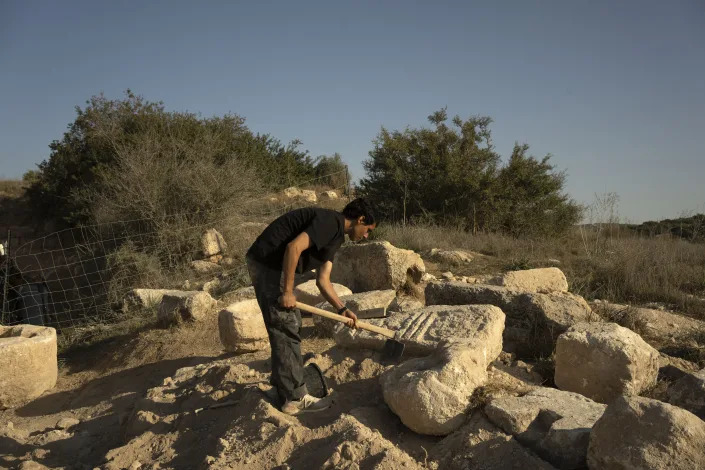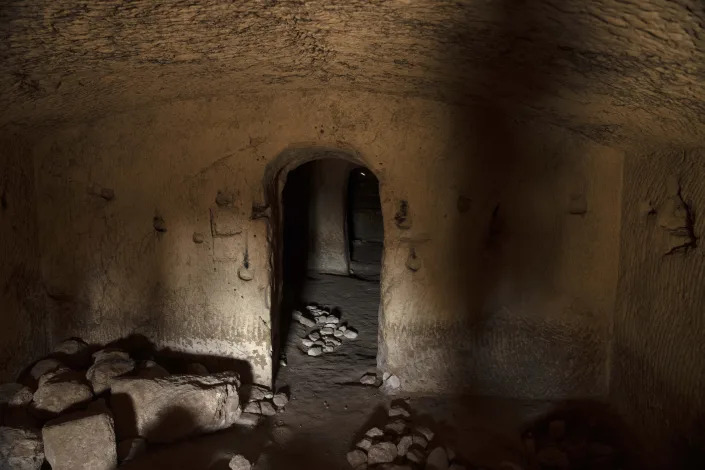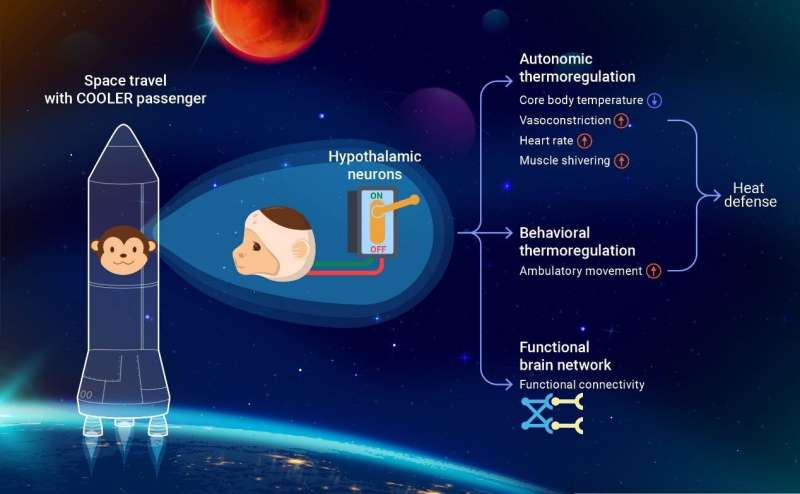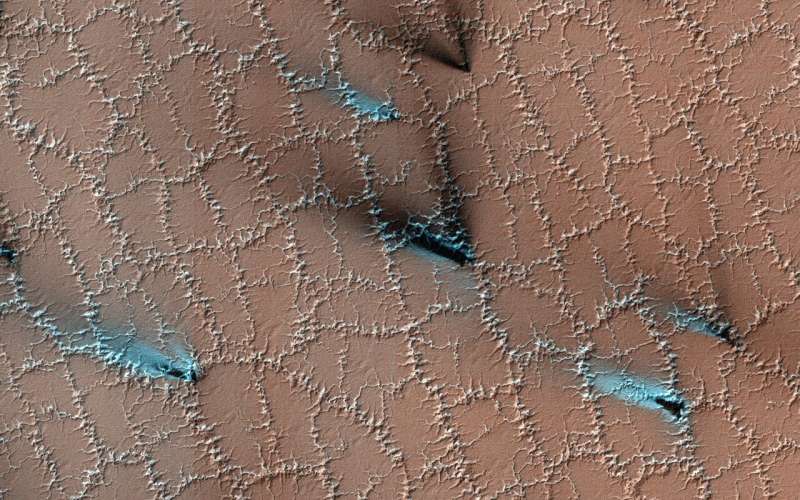LONG READ
Alife sized ice sculpture of a polar bear was recently living in downtown Montreal. As the bright sun beat down on it, the bronze skeleton underneath slowly became visible. Each drop of water that slid off the bones represents a portion of polar ice that is melting away. On December 19, the last day of the COP15 biodiversity conference, the entire skeleton was exposed.
That was the plan.
The jarring visual represents an unsettling reality. Without fast action the vulnerable polar bear population will be lost.
The rapid increase in global temperature over the past few decades has dramatically shrunk the polar ice caps, which regulate so much of the Earth’s major oceanic and air systems.
This mass-scale loss of ice, especially the Arctic cap, has the effect of changing the entire planet: the ice and snow reflect between 50 and 70 percent of the sun’s solar radiation, while oceans absorb about 95 percent; the loss of ice is rapidly warming the oceans, putting millions of species, including oceanic plant life, at risk; while sea level rise threatens coastal habitats where humans and millions of other plant and animal species exist.
From increased atmospheric temperature, to an epochal shift in climate patterns and weather systems, carbon emissions continue to alter the Earth’s giant ecosystem, and almost all organic life as we know it is being impacted.
According to the Committee on the Status of Endangered Wildlife in Canada (COSEWIC), as of May, 841 wildlife species were in various risk categories including endangered, threatened, special concern and extirpated, in Canada alone. Scientists have been using the phrase the ‘sixth mass extinction’ to describe the looming crisis. Humans and our activities are the main drivers.
The UN Environment Programme reports the following:
As COP15 came to a close in the early morning hours on December 20, a decision was reached. After two years of delays due to the pandemic, nearly 200 nations sealed a deal to halt and reverse biodiversity loss by 2030. The Kunming—Montreal Global Biodiversity Framework (GBF), as the decision is called, was ratified under the headline 30 by 30, meaning 30 percent of Earth’s land, oceans, coastal areas and inland waters will be protected by 2030.
The agreement, being trumpeted as a landmark deal to help avoid planetary catastrophe, already has its critics.
The decision was not reached without its challenges. Developing nations accused more developed nations of setting lofty ambitions without offering enough monetary support for all countries to achieve them. Some African, Latin American and Asian countries wanted a new dedicated biodiversity fund, while countries like Canada and Western European nations preferred to use the existing Global Environment Fund (GEF). Eventually, a compromise was reached to create a new dedicated biodiversity fund within the GEF.
“It was difficult to reach this agreement and it is a good one to start from so overall I am glad the parties were able to agree on it on time,” said Flavio Affinito, a PhD candidate in the Department of Biology at McGill University who spent the majority of his week as an observer at the COP conference.
While challenges like those surrounding the funding issues, prolonged the negotiations, the Kunming—Montreal GBF was ratified. The agreement sets out 23 targets for protecting biodiversity under overarching global goals: to maintain and restore natural ecosystems and the genetic diversity that lives within them for current and future generations; appropriately sharing resources amongst Indigenous and local communities for digital sequence information and traditional knowledge; and ensuring equitable access to financial resources, capacity building and scientific cooperation.
The main highlight of the decision is the 30 percent protection of natural areas by 2030. Currently, 17 percent of the world’s terrestrial and 10 percent of the world’s marine areas are under protection. Other highlights of the decision include reducing to near zero the loss of areas of high biodiversity importance, cutting global food waste in half, reducing the risk from chemicals and pesticides by half, mobilizing $200 billion annually in private and public funding for biodiversity, raising the flow of funds from developed to developing nations to $20 billion per year by 2025 and $30 billion by 2030, preventing the introduction of invasive species and requiring large and transnational companies to assess and disclose risks on the impacts on biodiversity through their operations.
According to the UN State of Finance for Nature Report, current finance flows for nature-based solutions are at $154 billion USD per year, less than half of the $383 billion needed by 2025 and a third of the $484 billion needed by 2030. The Global Biodiversity Framework from Kunming—Montreal allocates $200 billion for biodiversity and aims to reduce subsidies that harm biodiversity by at least $500 billion by 2030.
Affinito agreed that funding could be higher, especially in the amounts given to developing countries to help support biodiversity.
“Thirty billion a year is great but about triple as much would have been a good starting point,” he said.
The world erupted in celebration following the signing of the decision with some claiming the planet had been saved.
“I am quite surprised that people agreed to the 30 percent,” said Peter Arcese, Professor in the Department of Forestry and Conservation at the University of British Columbia. “I was very heartened, because my understanding is that the negotiations were really quite difficult.”
Arcese said he fully believes the 30 by 30 goal is achievable. He pointed to the example of the Serengeti conservation area in Tanzania where he used to work. The area is surrounded by Indigenous lands that have been dangerously mismanaged by the government for profit. Recently, the sensitive ecosystems have slowly been directed to be co-managed with the local population.
“Because many of those local people utilize the land in ways which are consistent with conservation, there is every reason to think that we might actually not just improve outcomes for conservation by pursuing the 30 percent goal, but improve outcomes for human wellbeing, particularly people who have traditionally been left out of that discussion,” he said.
Arcese is confident the same principles can be applied globally.
Others are a bit more skeptical about the potential of the 30 by 30 agreement. Thomas Burelli, a professor in the Faculty of Law and Co-Director of the Centre for Environmental Law and Global Sustainability at the University of Ottawa, said the purpose of the conference was to create a global framework so we should not be surprised that we now have one. He stressed the importance of remembering that this conference was originally supposed to happen in 2020 so we are now two years behind on achieving these goals.
“Before celebrating, saying it’s victory and saying it’s amazing, I would wait to see the results,” he said.
Part of the apprehension comes from historic patterns that show globally we have failed to reach the environmental targets that we have set for ourselves. In 2010, over 190 countries signed onto the Aichi Biodiversity Targets which aimed to reduce pressure on biodiversity, restore ecosystems and encourage the sustainable use of biological resources. In 2020, the United Nations (UN) reported that the international community failed to fully meet any of the targets and only met six in part.

cbc.caCOP15 delegates nearing draft proposal to save world’s species
2:35

DailymotionHistoric biodiversity deal reached at the COP15 summit in Montreal
1:05

cbc.caCOP15 delegates sign historic deal to protect nature
1:58
“In 2010, with the Aichi targets, people were like ‘yeah, it’s a new era for nature. We’ll live in harmony with biodiversity now’,” Burelli said. “Twelve years after, we didn’t achieve them and we still have the same kind of speech.”
Arcese and Affinito both argue that there is a sizable difference between the Aichi deal and Kunming—Montreal. According to Arcese, Aichi did not have a lot of “mechanism”, which he refers to as the types of funding and engagement that are explicitly mentioned in the Kunming—Montreal Decision. Engagement looks like the inclusion of women, Indigenous peoples and other minorities and local communities in conversations and actions.
Another problem with the Aichi targets was its language which was very ambiguous, making it unclear when a target would have been achieved. According to Affinito, many of the targets that are part of the Kunming—Montreal decision are clear enough that progress toward them can be measured effectively. However, some of the targets still leave them open to interpretation.
“Reducing environmental damage to ‘close to zero’, how close is close enough? One percent? 10 percent? 15 percent?” Affinito questioned. “These values mean very different things for ecosystems and the people and species relying on them.”
He added he also would have liked to see stronger language and more clarity around the mentioning of subsidies.
“The language surrounding their reduction and phasing out is so weak that it leaves a lot of room for countries to argue their way out of doing what needs to be done,” he said.
Burelli is leery that countries only have eight years to meet the targets.
“It's important to have healthy skepticism about that timeframe. But at the same time, people are busy doing it,” Arcese said.
He alluded to the example of parkland in British Columbia. Parks in the province make up approximately 15 percent of the landscape. The BC Parks Foundation recently received $100 million to acquire 25 new properties by 2025. This is just one initiative that Arcese said will help bring the western province closer to the 30 by 30 goal.
“My confidence comes from the knowledge of active engagement, which is already underway,” he said. He also said that while these examples don’t give him a sense of certainty, they do give him confidence.
Burelli is cautious, but not pessimistic. He agreed that while Canada did not meet the targets set out in the Aichi agreement, we did make some progress.
Canadian Environment Minister Steven Guilbeault went as far as to call the Montreal deal the Paris Agreement of biodiversity. The comparison has puzzled many as the world is currently failing to meet the targets set out in Paris, and Canada’s performance has been described as an embarrassment.
Only action, and consequences for failure that force real change, will make the signing of the Montreal deal a success, experts say.
“You are referring to one moment when the international community came to an agreement,” Burelli said. “But I don’t care about the agreement, I prefer to care about the intention of it.”
“The Government of Canada demonstrated at COP15 that it understands what it takes to be a leader in the global fight to protect, halt and reverse nature loss,” Melanie Snow, Ecojustice legislative affairs specialist, said in a press release. “The federal government must now translate the ambition and commitment it had on display on the international stage into concrete, meaningful action at home.”
The Kunming—Montreal agreement is not legally binding, meaning there will be no sanctions or other consequences for nations who fail to meet the targets within the given timeframe. The signing of the agreement is essentially symbolic. The public has to hold leaders to their promises.
“A stated commitment is better than nothing at all,” Affinito said. “If we don’t even sign these agreements then business as usual is a guarantee and there is no doubt anymore that business as usual will lead to catastrophic consequences for people worldwide. This agreement, if nothing else, signals to non-state actors, like companies, that nations are demanding that biodiversity be taken seriously.”
He said individual signatories can choose to enshrine all or part of the decision into their national laws. Minister Guilbeault has suggested that he is considering this avenue. Whether he does so, remains to be seen.
For Burelli, enshrining the decision into Canadian law is not the most important action. While Canada does not have a Biodiversity Act, he said there are parts of this agreement that are already within Canadian laws, for example the Endangered Species Act which, according to the government of Canada website, is “a key federal government commitment to prevent wildlife species from becoming extinct and secure the necessary actions for their recovery”.
We are in a time crunch and, to Burelli, it is more important that we work toward these targets using the resources and laws we already have rather than spending our time creating new laws. Trying to enact new legislation within this framework would take cooperation from all three levels of government and could take years to complete, if it’s even doable given the current schism between Ottawa and some of the provinces, including Ontario, when it comes to climate change and the protection of our natural world.
“We already have a framework in place to keep increasing the percentage of protected areas,” he said. “So we don’t need to adopt a completely new framework for these targets.”
“These targets will be very hard to achieve. And when I say this I'm very cautious because I'm already ready to bet that we won't achieve it.”
Affinito said the decision required the consensus of over 190 nations who have various cultural and geographic settings. Therefore, he said it is important to remember that an agreement requiring multinational cooperation will be a baseline and does not stop individual countries from being more ambitious in their own efforts.
“Don’t forget that this agreement is a minimum, a floor below which states should not be falling,” he said.
Rather than having a disincentive of consequences for failure to achieve, the incentive for achieving these targets is the knowledge that we are protecting and conserving biodiversity.
“I think what we've found is that it's more a change of habit,” Arcese said. “And changing the habits and how we use resources is not necessarily a backwards thing to conservation and economy.”
Affinito agrees that the attitudes of people toward biodiversity need to change. We need to stop viewing the world as ours to use and rather see ourselves as a small part of a much larger whole.
“We need a shift in mindset away from profit first, to people and planet first,'' he said. “The best way to incentivize countries to change is for people to shift their focus too.”
Humans are by nature selfish beings. So we need to understand that protecting biodiversity is good for us as well. It is important for governments to recognize the economic viability in these solutions, which appeals to more individualistic priorities.
“The number one thing to keep in mind is that we have power when it comes to the future,” Affinito said. “It isn't just about the pandas and polar bears, it’s about the air you breathe and water you drink and make sure that it becomes a number one priority where you live.”
“Thousands of local scale improvements can lead to a healthier biosphere.”
Email: rachel.morgan@thepointer.com
Twitter: @rachelnadia_
Rachel Morgan, Local Journalism Initiative Reporter, The Pointer


















